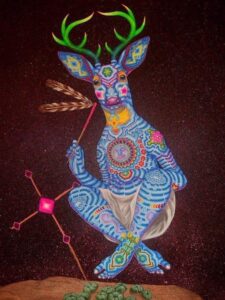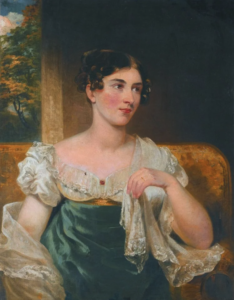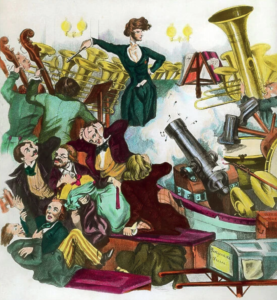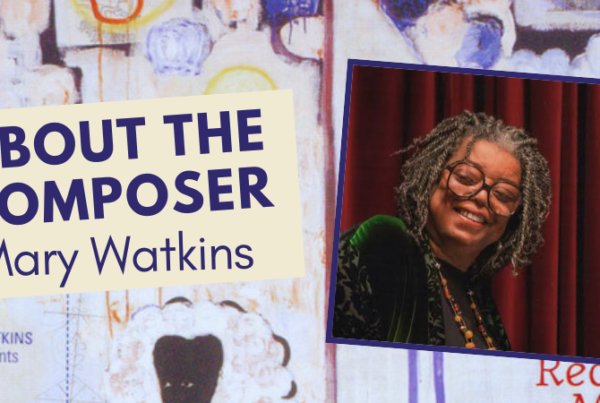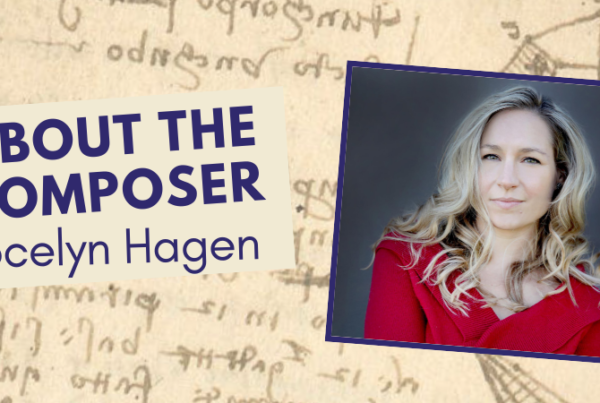Kauyumari
Gabriela Ortiz (b. 1964)
Duration: about 7 minutes

I fell in love with music once I understood that sounds have souls, and it is through them that one may speak of oneself. -Gabriela Ortiz
Latin Grammy-nominated Gabriela Ortiz is one of the foremost composers in Mexico today, and one of the most vibrant musicians emerging in the international scene. Her musical language achieves an extraordinary and expressive synthesis of tradition and the avant-garde; combining high art, folk music and jazz in novel, frequently refined and always personal ways. Her compositions are credited for being both entertaining and immediate as well as profound and sophisticated; she achieves a balance between highly organized structure and improvisatory spontaneity.
About the piece
Among the Huichol people of Mexico, Kauyumari means “blue deer.” The blue deer represents a spiritual guide, one that is transformed through an extended pilgrimage into a hallucinogenic cactus called peyote. It allows the Huichol to communicate with their ancestors, do their bidding, and take on their role as guardians of the planet. Each year, these Native Mexicans embark on a symbolic journey to “hunt” the blue deer, making offerings in gratitude for having been granted access to the invisible world, through which they also are able to heal the wounds of the soul.
When I received the commission from the Los Angeles Philharmonic to compose a piece that would reflect on our return to the stage following the pandemic, I immediately thought of the blue deer and its power to enter the world of the intangible as akin to a celebration of the reopening of live music. Specifically, I thought of a Huichol melody sung by the De La Cruz family — dedicated to recording ancestral folklore — that I used for the final movement of my piece, Altar de Muertos (Altar of the Dead), commissioned by the Kronos String Quartet in 1997.
Totentanz (Dance of the Dead) for piano and orchestra
Franz Liszt (1811-1886)
Silvan Negruțiu, pianist (click to read his bio)
Duration: about 16 minutes
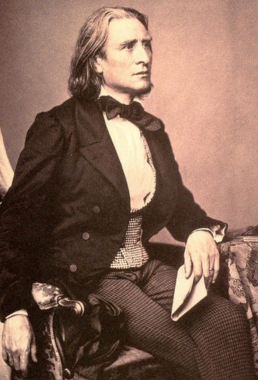
A quintessential example of the 19th century “romantic,” Franz Liszt was a prolific composer of works that presaged harmonic and structural elements of the next century. He was also renowned as one of the greatest concert pianists of his time.
Liszt had a lifelong obsession with death and the hereafter, and the Totentanz (Dance of the Dead) is reflective of that curious fascination. Totentanz is a set of variations for piano and orchestra and is a paraphrase on the Medieval Gregorian chant “Dies Irae” (Day of Judgement). Further inspiration came from a famous Italian fresco “Triumph of Death,” viewed by the composer in Pisa where he visited with his current mistress and paramour in 1838. Ten years later, he had completed sketches for a work for piano and orchestra which was subject to numerous revisions during the 1850’s. It was given its first performance in completed form in 1865 by Liszt’s student Hans von Bulow, to whom it is dedicated.
About the Piece
The scoring of Totentanz combines traditional canonic and contrapuntal treatment of the Dies Irae theme with dissonant and percussive passages for the solo piano. These piano passages have been compared in style to examples by 20th century composer Bela Bartok, written a century later. Bartok himself frequently performed the Totentanz as have most contemporary concert pianists. The subject of death is clearly delineated in the writing for both piano and accompanying orchestra. Liszt biographer Richard Pohl writes, “Every variation discloses some new character – the earnest man, the flighty youth, the scornful doubter, the prayerful monk, the daring soldier, the tender maiden, the playful child.”
Symphonie fantastique, Op. 14
Hector Berlioz (1803-1869)
Duration: about 50 minutes in 5 movements
Reveries and Passions
A Ball
Scene in the Countryside
March to the Scaffold
Dream of a Witches’ Sabbath
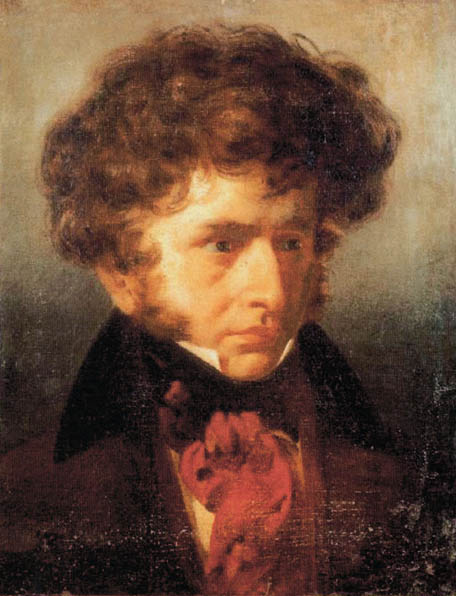
Berlioz was famed for his skills at orchestration, and this work is a fine example of his incomparable instrumental delineations of subjects in what can be called “program music,” or a tale told in music.
Compared with Franz Liszt and Sergei Rachmaninoff, two composers also featured in this Flagstaff Symphony season’s repertoire, Hector Berlioz to an even greater extent fits the image of a 19th century “romantic” artist. As a young boy he received some rudimentary musical training from his father, a distinguished physician who strongly encouraged his son to follow him in that profession. A copy of Rameau’s “Treatise on Harmony” was discovered by the young Berlioz in the extensive family library, and he began some self-instruction in the principles of harmony and composition. Family pressure resulted in his pursuit of a degree in medicine, but the young man could not bring himself to follow in his father’s footsteps.
A permanent move to Paris from his boyhood home in the south of France led to exposure to the world of opera and theatre, as well as much music with which he was still unfamiliar. He soon enrolled at the Paris Conservatory where he for the first time received a significant musical education. Upon hearing the Third and Fifth Symphonies of Beethoven for the first time, he declared, “Beethoven opened before me a new world of music, as Shakespeare had revealed a new universe of poetry.” Having been cut off from financial support by his family, this was a period of struggle for the young composer. A fortuitous award of the prestigious Prix de Rome in 1830 allowed him to pursue further musical education and exposure to the arts in Italy, particularly in Florence. Numerous and usually less than successful love affairs and marital alliances played a significant role in the life and career of Berlioz both in Italy and in Paris.
Harriet Smithson, Irish actress and Berlioz’s obsession
At a performance of Shakespeare’s Hamlet at the Odeon Theatre in Paris in 1827, Berlioz became infatuated with the young Irish actress Harriet Smithson, whom he relentlessly pursued and eventually married (the marriage only lasted three years). During his relentless pursuit of Miss Smithson, Berlioz discovered that she had become engaged to a rival suitor. The Symphonie fantastique, originally intended as a love offering, was recast as an expression of love gone wrong.
“A Concert in the Year 1846,” a satirical print by Andreas Geiger depicting Hector Berlioz conducting his Symphonie fantastique
Program Notes (written by Berlioz in 1845):
Part One: Reveries, Passions—The author imagines that a young musician, afflicted with that moral disease that a celebrated writer [Chateaubriand] calls ‘the surge of passions,’ sees for the first time a woman who embodies all the charms of the ideal being of whom he has dreamed, and he falls hopelessly in love with her. Through a bizarre trick of fancy, the beloved image always appears in the mind’s eye of the artist linked to a musical thought whose character, passionate but also noble and reticent, he finds similar to the one he attributes to his beloved.
The melodic image and its human model pursue him incessantly like a double idée fixe. This is the reason for the constant appearance, in every movement of the symphony, of the melody that begins the first allegro. The passage from this state of melancholic reverie, interrupted by a few fits of unmotivated joy, to one of delirious passion, with its movements of fury and jealousy, its return of tenderness, its tears, its religious consolation—all this is the subject of the first movement.
Part Two: A Ball—The artist finds himself in the most varied situations—in the midst of THE TUMULT OF A FESTIVE PARTY, in the peaceful contemplation of the beauties of nature; but wherever he is, in the city, in the country, the beloved image appears before him and troubles his soul.
Part Three: Scene in the Countryside—Finding himself in the country at evening, he hears in the distance two shepherds piping a ranz des vaches in dialogue [a ranz des vaches is a tune sung or played by a Swiss herdsman]. This pastoral duet, the scenery, the quiet rustling of the trees gently disturbed by the wind, certain hopes he has recently found reason to entertain—all these come together in giving his heart an unaccustomed calm, and in giving a brighter color to his ideas. He reflects upon his isolation; he hopes that soon he will no longer be alone. . . . But what if she were deceiving him! . . . This mixture of hope and fear, these ideas of happiness disturbed by black presentiments, form the subject of the ADAGIO. At the end, one of the shepherds again takes up the ranz des vaches; the other no longer replies. . . . The distant sound of thunder . . . solitude . . . silence.
Part Four: March to the Scaffold—Convinced that his love is spurned, the artist poisons himself with opium. The dose of narcotic, while too weak to cause his death, plunges him into a heavy sleep accompanied by the strangest of visions. He dreams that he has killed his beloved, that he is condemned, led to the scaffold and is witnessing HIS OWN EXECUTION. The procession advances to the sound of a march that is sometimes sombre and wild, and sometimes brilliant and solemn, in which a dull sound of heavy footsteps follows without transition the loudest outbursts. At the end of the march, the first four bars of the idée fixe reappear like a final thought of love interrupted by the fatal blow.
Part Five: Dream of a Witches’ Sabbath—He sees himself at the sabbath, in the midst of a frightful assembly of ghosts, sorcerers, monsters of every kind, all come together for his funeral. Strange noises, groans, outbursts of laughter, distant cries which other cries seem to answer. The beloved melody appears again, but it has lost its noble and shy character; now it is no more than the tune of an vulgar dance, trivial and grotesque: it is she, come to join the sabbath. . . . A roar of joy at her arrival. . . . She takes part in the diabolical orgy. . . . Funeral knell, burlesque parody of the DIES IRAE, SABBATH ROUND-DANCE. The sabbath round and the Dies irae combined.

